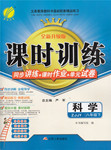17.It was an exciting day when Thomas Finger looked inside the nose of a small black mouse.Finger had borrowed the animal from another scientist.It was not your average mouse.The mouse's genes had been changed so that the taste buds(味蕾) on its tongue turned green when you shined light on them-like a secret message written in secret ink.
But no one had ever looked inside its nose.When Finger finally did look there with a microscope,he saw thousands of green cells."It was like looking at little green stars at night,"says Finger,
Seeing that green starry sky was Finger's first glimpse of a new world.If he and other scientists are right,we don't taste things just on our tongues.Other parts of our body can also taste things-our nose,our stomach,even our lungs!
You might think of taste as something that you experience when you put chocolate in your mouth-or chicken soup,or salt.But for you to taste chocolate or chicken soup,special cells on your tongue have to tell the brain that they detected chemicals that are in the food.We have at least five kinds of these chemical-detecting cells (commonly called taste cells) on our tongues:cells that detect salt,sweet mixtures,sour things,bitter things and savory(香的) things like meat or broth.
It's these chemical-sensing cells that scientists are now finding all over the body."I'll bet you that in terms of total number of cells,"says Finger,"there are more[taste cells]outside the mouth than inside the mouth."
This gives us clues about other functions the sense of taste has in our bodies.It could also help scientists find new treatments for certain diseases.
33.In which way is Finger's mouse different from a common one?B
A.Its nose has chemical-detecting cells.
B.Its tongue can change color.
C.Its tongue has more taste cells.
D.Its nose is green.
34.What Finger saw inside the mouse's nose is.C
A.a kind of cell detecting salt
B.a kind of gene like a star
C.a surprising finding
D.a secret message
35.From the passage,we may conclude that Finger's finding.A
A.helps find more functions of the sense of taste
B.helps find more functions of the tongue
C.will cause quarrels among scientists
D.will prevent some diseases.
分析 本文由介紹了科學家的一個新發現,有一種老鼠可以感光而改變味蕾的顏色.這給我們提示了可以探究許多味覺的新功能.
解答 33.B.理解推斷題.由第一段The mouse's genes had been changed so that the taste buds(味蕾) on its tongue turned green when you shined light on them-like a secret message written in secret ink,可知這種老鼠在對它們照射光的時候,舌頭上的味蕾會變成綠色,故選B.
34.C.理解推斷題.由第一段It was an exciting day when Thomas Finger looked inside the nose of a small black mouse,和第二段But no one had ever looked inside its nose,可知這個發現是激動人心的時刻,從來沒有人注意到這一點,故選C.
35.A.細節理解題.由最后一段This gives us clues about other functions the sense of taste has in our bodies,可知這個發現給了我們一些發現味覺其他功能的線索,故選A.
點評 本類文章時代氣息濃郁,但專業詞語較多,增加了閱讀難度.考生平時可以有意識地從報刊雜志上找一些較難的閱讀材料來閱讀,以培養自己迎難而上的心理素質.



 課時訓練江蘇人民出版社系列答案
課時訓練江蘇人民出版社系列答案 黃岡經典趣味課堂系列答案
黃岡經典趣味課堂系列答案 啟東小題作業本系列答案
啟東小題作業本系列答案